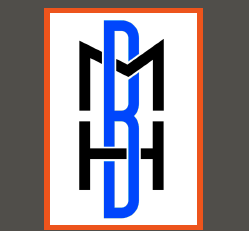
Bangla Bronx: The Bangladeshi Community in the Boogie Down
May 21, 2016 @ 7:00pm
Featuring musicians Ifti & the Royal Bengal Tea House, a fusion of Spanish and Bengali folk songs with the poetry of Rabindranath Tagore and Pablo Neruda recited by Ifti Chowdhury and Misty Martínez followed by the Feringhees who perform a fusion of Bengali music and rock music.
This event is part of the South Bronx Culture Trail’s Jazz festival, Lookin’ Up in the Boogie Down Jazz & Fusion Festival
At the BMHC we celebrate the Bronx’s soundscape: from the rhythms of salsa and Garifuna drums to the beats of hip hop, our great borough is constantly becoming home to new communities who bring their music with them. As we celebrate Asian American & Pacific Islander’s Heritage Month, tonight’s program will focus on the emerging Bangladeshi community here and how their younger generation is creatively exploring the sounds of traditional music and other genres to create their own voice.
New York City is home to 91% of the state’s Bangladeshi residents, with 17% per-cent of them making the Bronx their home. Bangladeshis are now the largest Asian-born ethnic group in the borough. The community began to grow in the early 1990s when the United States created a “visa lottery system” which aided arrival from countries that historically had a difficult time moving to the United States. Originally many Bangladeshis settled in Queens in neighborhoods such as Astoria (which became known as “Little Bangladesh”) and Jackson Heights. To find more affordable rents, many began to migrate to the Bronx. The Bangladesh Society of New York moved from Queens to Parkchester in 2003 and renamed itself the Bangladeshi Society of the Bronx. The change in the Bronx has been striking. In 1991 there were ten Bengali families in Parkchester, now there are more than 4,000 Bangladeshi residents there (2009 Census Bureau data). There are 8,000 Bangladeshi residents throughout the Bronx, as Norwood in the north of the borough is also becoming a home to many Bangladeshis.
In Parkchester, Starling Avenue in the main commercial
thoroughfare and hub for the Bangladeshi community, where one can find the foods of bhaja, sabzi, as well as fuchka, fried snacks of puri bread filled with spices, potatoes, onions and chickpeas. The patrons of the largest mosque in that area, Jame Masjid, are almost entirely Bangladeshi. In 1987 the mosque had eleven members, now there are 1,500 worshippers on Fridays (the most important worship day for Muslims). The strains of Bangla music can be heard in the streets along with the sounds of the bansuri (Middle Eastern flute) or the guitar-like instrument of the dotara, as well as Bollywood movies, which the community has adopted. Tonight Bangla Bronx celebrates the new sounds of our borough.
